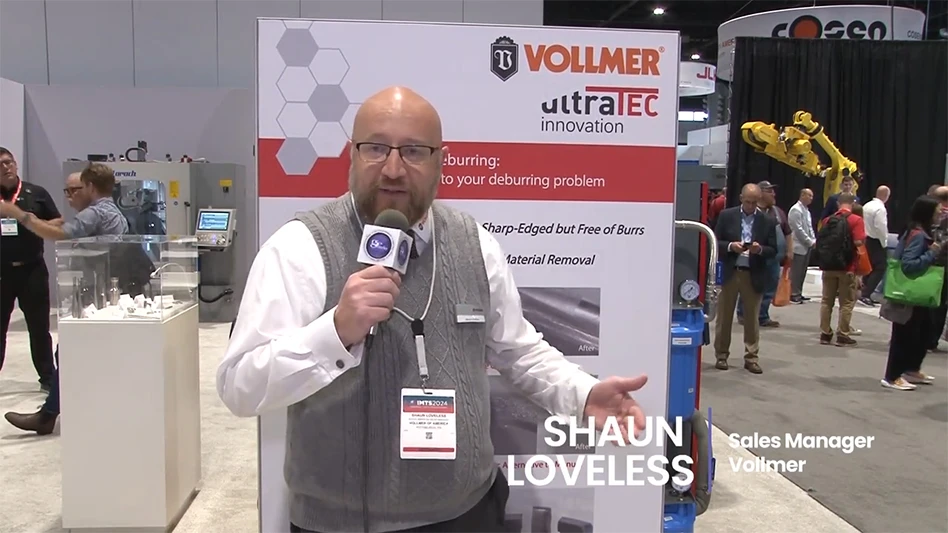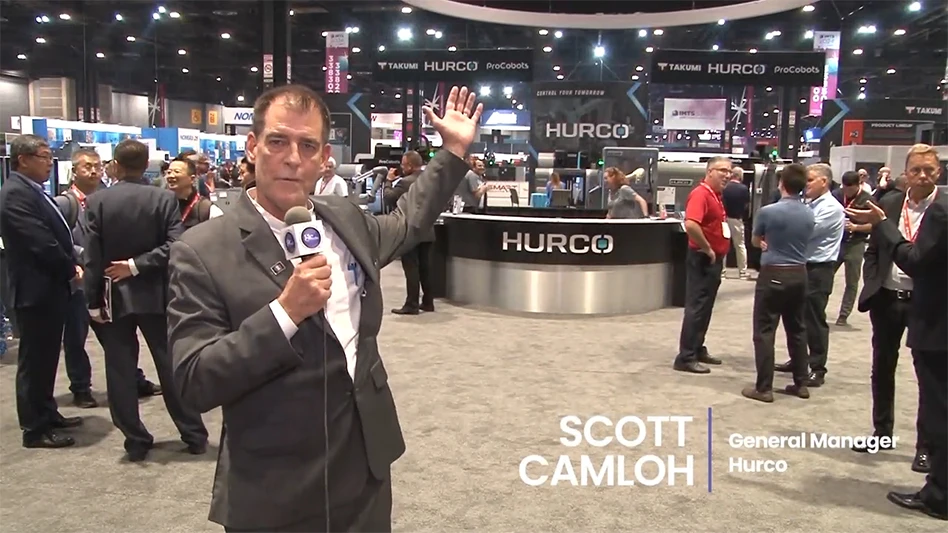With several spindles and numerous functions, the Amada S-10 turning/milling center has a variety of modular options suited specifically for the aerospace industry. With two turrets, 8- or 12-stations each, one main spindle, and an optional sub-spindle, the S-10 can do more in one loading, often with simultaneous machining from live spindles on each turret.
Combining a decade worth of experience with multi-function and multi-live-spindle machines, the S-10 combines an improved ergonomic design – the spindle faces the operator – with high productivity twin-turrets, and a choice of gantry-loading, bar-feeding, or manual-loading options. The machine includes a reversing vise and a sub-spindle, offering an alternative way of working on both ends of a part with one loading.
The machine offers standard turning, indexing for multi-side milling, drilling, boring, and threading, with full C-axis continuous motion for contour milling. In coordination with the C-axis, each turret is capable, independently, of simultaneous 3-axis motion.
 The Amada S-10 turning/milling center has a variety of modular options suited specifically for the aerospace industry. The Amada S-10 turning/milling center has a variety of modular options suited specifically for the aerospace industry. |
Advances in Configuration
With a wider variety of machining and part handling functions, the S-10 is equipped with modular machining heads and a quick-change toolholder. Counter-shafts through the turret, which drive the milling/drilling heads, offer a high-torque X- and Z-axis version for work on perpendicular planes. The angular drilling head uses the multi-axis motion of the turret to drill holes at angles ranging from 8° to 35° from the primary machine axes. Additional modular options include quick-change turning and boring toolholders, a polygon toolholder, and cutters that allow multi-axis turning of flat faces.
The S-10's twin-turret configuration can double the normal milling and turning throughput of a multi-axis machine tool while back-side machining, with cut-off capability, avoids the need for separate set-ups or off-line operations. Some available options include a dedicated, on-board tool-setting device; an on-board video camera for remote monitoring; and simulation software for testing an entire program in virtual space.

Explore the April May 2012 Issue
Check out more from this issue and find your next story to read.
Latest from Aerospace Manufacturing and Design
- Inventory traceability and document management
- Oklahoma Aviation Academy breaks ground for new building
- MIDACO’s automatic 4-pallet changer with trunnion system
- IMTS 2024 Booth Tour: Tornos Technologies
- A Primer on Defense Contract Manufacturing
- The intersection of AI and simulation in the space industry
- The secret sauce
- Avia Solutions Group places firm order for 40 Boeing 737 MAX jets







